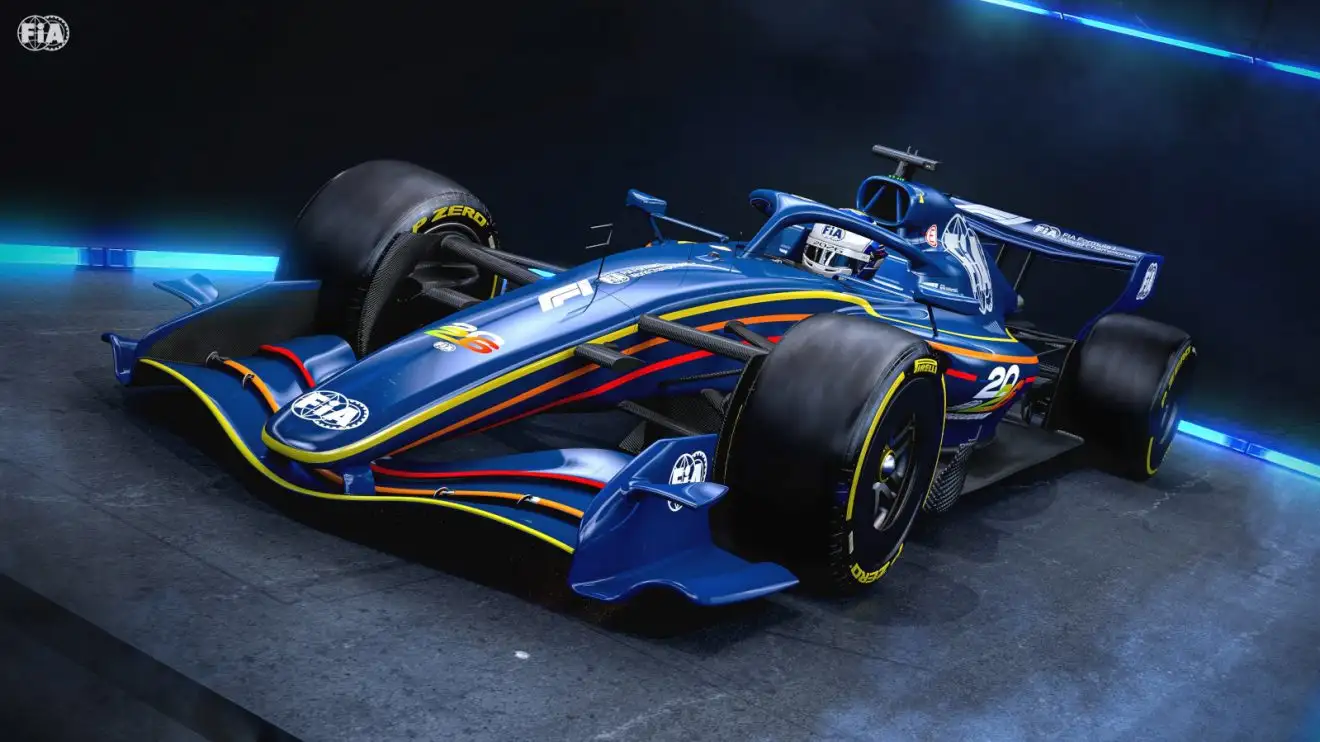All-new F1 2026 rules slammed as ‘not very racy’ after early sim experience

The FIA has released 'refined' car renderings of the F1 2026 design.
Lance Stroll has offered a stinging critique of the all-new regulations set to be introduced into Formula 1 in 2026.
Sweeping new chassis and power unit regulations promise to shake up the established order next year in what is regarded as the largest rule change in world championship history.
Lance Stroll unimpressed by F1 2026 sim experience
From 2026, Formula 1 will move to power units that use a 50:50 blend of electrical power versus that derived from a traditional internal combustion engine.
Fully sustainable fuels will also be introduced for the first time as the sport pushes towards its Net Zero carbon target for 2030.
In addition to the power unit regulations, the sport will embrace the use of moveable aerodynamic devices – a compromise to ensure cars run with minimal drag in the straights while maintaining good grip levels through corners.
The two modes, dubbed X-mode (low downforce) and Z-mode (high downforce), aim to make cars more energy efficient, improve overtaking, and partially replace the current drag reduction system.
However, according to Stroll, the end result is a car that is not especially inspiring to drive.
“The regulations, I think… I don’t know. Bit sad,” the Canadian ventured.
“I did drive in the sim. That’s why it’s a bit sad, because I think it’s just… It’s a bit of a shame. Formula 1’s just taking that path of electric energy, and we’ve had to show all the downforce off the cars to support the battery power.
“Would just be fun to see some light, nimble, fast cars, with a lot of downforce, and just simplify the whole thing a bit; less of an energy/battery championship science project, and more of just Formula 1 racing.”
More on F1 2026 rule changes
👉 F1 2026 tech analysed: The future of overtaking and biggest car advantage identified
👉 F1 2025 v F1 2026: Nine key questions ahead of huge regulation changes
F1 2025 spec cars weight in at 800kg, including driver but without fuel – a two-kilogram increase over 2024 to allow for taller drivers. That figure will reduce for F1 2026, though cars will still come in at a hefty 768kg.
By contrast, cars in the early 1990s weighed just 505 kilograms, a figure that had come down from a decade earlier.
The result is cars that are less nimble and dynamic on track, a byproduct of the heavy batteries cars now carry, which in turn negatively impact the racing experience, according to Stroll.
“A lot of it’s about that [deploying, harvesting, and managing energy],” he confessed.
“I don’t know if that’s racing. But it’s going to be the same for everyone next year, and it’s all going to be about who can do that the best. Whoever’s doing that best is going to love the new regs.
“I’m not a fan of the direction,” Stroll added.
“But if we have a fast car and we’re competitive, and we’re doing better than everyone else… That’s when you’ve got nothing to complain about.
“So I don’t love the idea of the regs, though. I think a lot of the drivers can agree on that. Maybe some of them can talk about it for political reasons.
“It’s exciting to think about cars that can scream a little bit louder, be a bit lighter, and just not depending, or not focus so much on that energy – battery, powertrain – that’s not very racy.”
Aston Martin will become the factory Honda squad next year when the Japanese manufacturer swaps its allegiances from Red Bull.
The Silverstone-based operation has also recruited Adrian Newey, whose focus is on next year’s car. He works on that from within the squad’s expansive new factory, with the benefit of a newly-opened wind tunnel.
Read more: F1 investigating critical rule change to stamp out ‘dishonest allegations’




